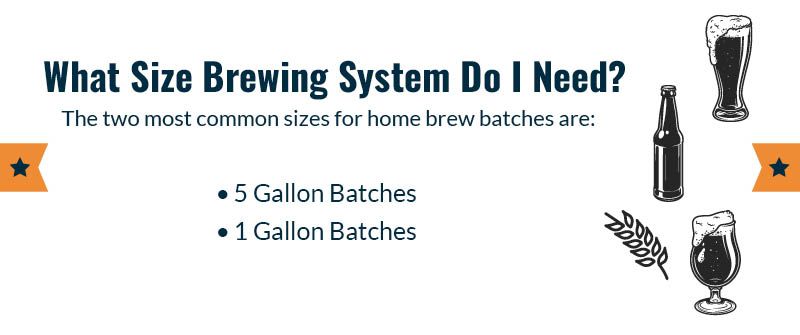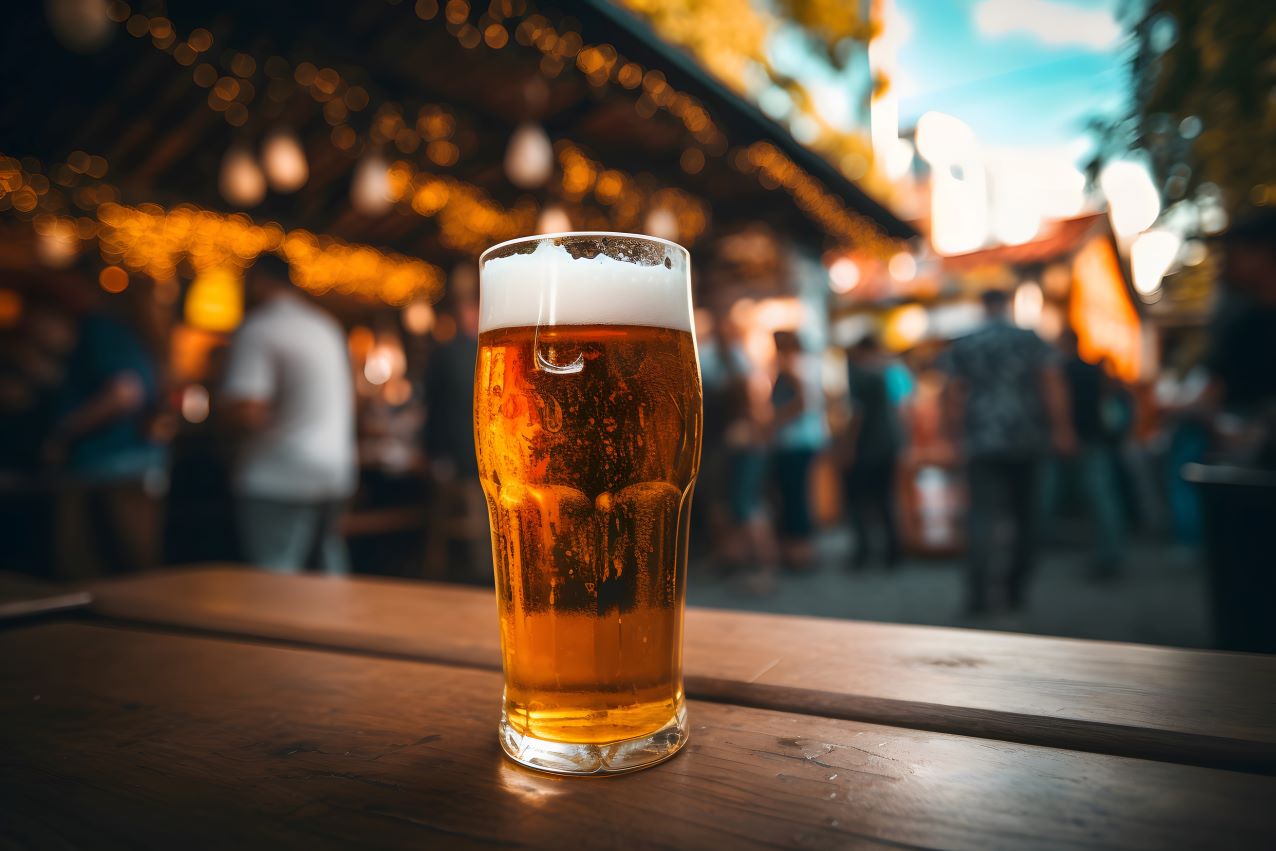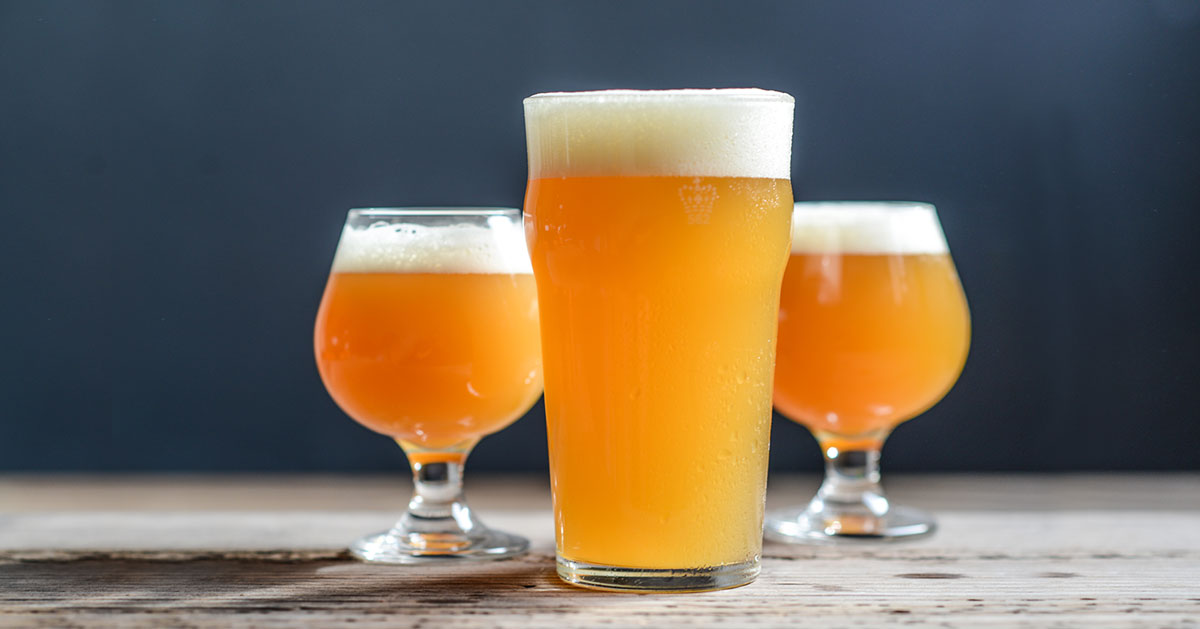Beer-Making Process at Home
The beer-making process is both an art and a science. Some steps are tried and true, while others leave more room for personal touch. As you look for ways to simplify your brewing process and leave more opportunities for creativity and enjoyment, using a beer-making kit can reduce repetitive and tedious tasks. In this article, we’ll show you how.
What Are The 13 Steps Of The Beer Brewing Process?
The 13 steps of the home brewing process are:
- Gather equipment and supplies for your brewing day. You’ll need:
- Space to work
- Heat source
- Brewing pot
- Fermenting container
- Ingredients
- Yeast
- Thermometer
- Airlock
- Stirring spoon
- Cleaning and sanitizing supplies
- Hydrometer
- Measuring cup
- Clean your equipment. Remove residue, gunk, and dust that get in the way of sanitizing.
- Sanitize your equipment. Keep each and every piece of equipment free of pesky contaminants.
- Create wort. Steep grains in water, then combine with malt extract. Bring the mixture to a boil and stir in hops, additional flavors, and any other ingredients.
- Ferment your wort into beer. Transfer your mixture into your fermenting container. Cool the wort using cold water, ice, or a home brew chiller. Aim for 65ºF to 75ºF to get the best results. Once chilled, add yeast, seal with an airlock, then leave your wort to ferment for one to two weeks (depending on your recipe).
- Gather equipment and supplies for your bottling day. You’ll need:
- Bottling container with spigot
- Cleaning and sanitizing supplies
- Capper
- Siphon
- Bottles and caps
- Priming sugar
- Clean your equipment (again). Ensure that your equipment is free of residue, gunk, and dust.
- Sanitize your equipment (again). Sanitize each and every piece of equipment—from the bottling container to your bottle caps—to keep out pesky contaminants.
- Prepare your bottling container with priming sugar. This will help the carbonation go smoothly, giving your beer the texture that drinkers have come to expect.
- Transfer beer. Use a siphon to easily transfer your beer from the fermenting container to the primed bottling container.
- Fill bottles. Use tubing to connect the spigot to bottles to minimize spillage during this step.
- Cap and seal each bottle. Use a capper to ensure an airtight seal that will keep your beer safe from contamination.
- Store bottles. Set a space aside to store your filled bottles at room temperature for about two weeks.
There’s also a very important bonus step for the beer-making process at home for beginners:
- Enjoy your hard work and tasty brew with friends and family!

What Equipment Is Needed For Beer Brewing?
We mentioned a lot of pieces of equipment while covering the beer-making process at home, step by step; here’s a condensed list of what you need to brew your own beer:
- Fermenter
- Airlock
- Brew pot (or brew kettle)
- Heat source
- Siphon
- Cleaning and sanitizing supplies
- Hydrometer
- Capper
- Stirring spoon
- Measuring cup
- Thermometer
- Bottling container with spigot
- Tubing
This may seem like a long list, but there are a couple of ways to knock off a lot of items quickly. First, you likely already have some items, like a stirring spoon and a measuring cup, in your kitchen. Second, for all the pieces of equipment unique to home brewing, you can get what you need with a homebrew starter kit. These kits are a great way for beginners to assemble their first home brewery. For example, the Basic Brewing Starter Kit comes with:
- 6.5-gallon fermenting bucket, lid, and airlock
- 6.5-gallon bottling bucket with spigot, tubing, and bottle filler
- Laboratory-grade thermometer
- Stick-on bucket thermometer
- Hydrometer
- Test jar
- Auto-siphon with tubing
- Bottlebrush
- Capper
- Bottle caps
- Priming sugar for carbonation
- Easy Clean one-step cleanser
- Instruction manual
- Phone support from our trained and brew-loving staff is available 7 days a week
And for those who have been brewing for a while, there are also kits like the Ultimate Brewing Starter Kit for Bottling to make upgrading your system easy and exciting!
What Size Brewing System Do I Need?
The minimum size of your brewing system depends on the size of batches you’d like to brew. The two most common sizes for home brew batches are:
- 5 Gallon Batches: Boiling pots, fermenters, and bottling containers should each be able to hold at least 6.5 gallons.
- 1 Gallon Batches: Boiling pots, fermenters, and bottling containers should each be able to hold at least 1.3 gallons.
Generally, boiling pots, fermenters, and bottling containers should be at least 1.3 to 1.5 times larger than the batch you are brewing. You can start your home brewery off on the right foot with the Basic Brewing Starter Kit or the Brewer’s Best 1 Gallon Brewing Starter Kit.

Can You Make Beer Without A Kit?
It is possible to make beer at home without a kit, but it will take longer, and you will likely face more challenges while brewing. Here are two reasons why you shouldn’t make beer without a kit (even though you technically could):
- You’re going to waste your time. To start, shopping takes a while. Whether you’re driving from store to store or browsing tabs and tabs of online shops, you could save all that time and hassle by getting what you need in one package: a beer-making kit.
- You could end up wasting beer (and money). While there’s a standard procedure for brewing beer at home, each recipe has variations in the process. If you don’t follow these unique specifications, you could mess up the flavor and quality of your brew. That means you’ll have to start over from scratch with new ingredients and a new batch. Fortunately, our beer ingredient kits come with detailed instructions. Take a look at the guide for the Chico Suave Pale Ale Beer Kit.
How Do You Make Beer Without A Beer Kit?
You can make beer without a beer-making kit, but it will take longer, and there may be some more frustrations along the way. Whether you use a kit or not, the basic beer brewing process steps are the same:
- Gather equipment and supplies (brewing day).
- Clean equipment.
- Sanitize equipment.
- Steep grains and boil wort.
- Add yeast and ferment the wort.
- Gather equipment and supplies (bottling day).
- Clean equipment.
- Sanitize equipment.
- Add priming sugar to the bottling container.
- Transfer beer to the primed bottling container.
- Fill bottles.
- Seal bottles with capper.
- Store filled bottles for two weeks before serving.
However, the difference that a kit makes is that certain brewing process steps become a lot easier and less time-consuming. There are two types of beer-making kits that can improve your experience:
- Homebrew Starter Kits: These kits come with the essential pieces of beer brewing equipment to get you started or to upgrade your setup.
- Beer Ingredient Kits: These kits come with pre-portioned grains (like malted barley) and hops for a specific recipe.
The fun of home brewing isn’t in the shopping. It’s in building your perfect setup, finding that exciting recipe, mastering your craft, and sharing the results of your hard work with friends and family. Beer-making kits put the focus back on brewing, not all the other junk.
Do Home Brewing Kits Work Well?
Home brewing kits are a fantastic way for both beginners and experienced brewers to increase their enjoyment of this amazing hobby. The beer-making kit for beginners benefits are:
- Quick and easy way to set up a home brewery with a home-brew starter kit
- Efficient way to gather the exact amount of necessary hops and malted grains with a beer ingredient kit
- Easy-to-follow guides included with beer ingredient kits to help beginners master the basics
For experienced brewing enthusiasts, home brewing kits have the following benefits:
- Exciting ways to upgrade home brewery setup with advanced homebrew kits
- Easy way to try out new exciting recipes with beer ingredient kits
Whether you’re considering becoming a home brewer or you’ve already got quite a few batches under your belt, it’s worth exploring your options for homebrew starter kits and beer ingredient kits!

Are Beer Brewing Kits Worth It When Brewing Beer?
Using a beer-brewing kit is worth it because doing so can save you both time and money. It’s tough to put a monetary value on time, but if you’ve ever spent way too much time stuck in traffic, pacing shop aisles, or trying to figure out how to make a functioning recipe from scratch, then you already understand how valuable a beer making kit can be.
Beer ingredient kits also help you save money because they cut down on wasted ingredients and time spent researching different beer recipes. Rather than buying packages of different types of hops that give you way more than you need for a specific recipe, these kits provide you with the exact amounts you’ll use—no more awkward amounts of leftovers that end up in the trash all too often.
What Is The Best Homebrew Kit for Beginners to Brew Their Own Beer?
The best beer-making kit for sale, like most purchases, depends on exactly what you want to get out of it. If you’re looking for a cost-effective way to set up your home brewery for the first time, then the Basic Brewing Starter Kit is a great choice with all the essentials.
For those looking to try their hand at brewing new flavors, the best homemade beer recipe for beginners is one that’s tasty and still easy to make. Try an American Pale Ale, like a PDG Pale Ale, to start.
Great Fermentations: Your Source for Equipment, Ingredients, and Everything In Between to Brew Beer
If you love making beer or just want to begin brewing, you’ve come to the right place. If you’re searching for a “beer-making kit near me,” then our Indianapolis location could be your one-stop shop for all things home brewing. If you’re farther away or just prefer some extra convenience, then our online shop brings our extensive stock and friendly staff to you—no matter where you are! Explore our options for beer-making equipment, ingredients, and more!



